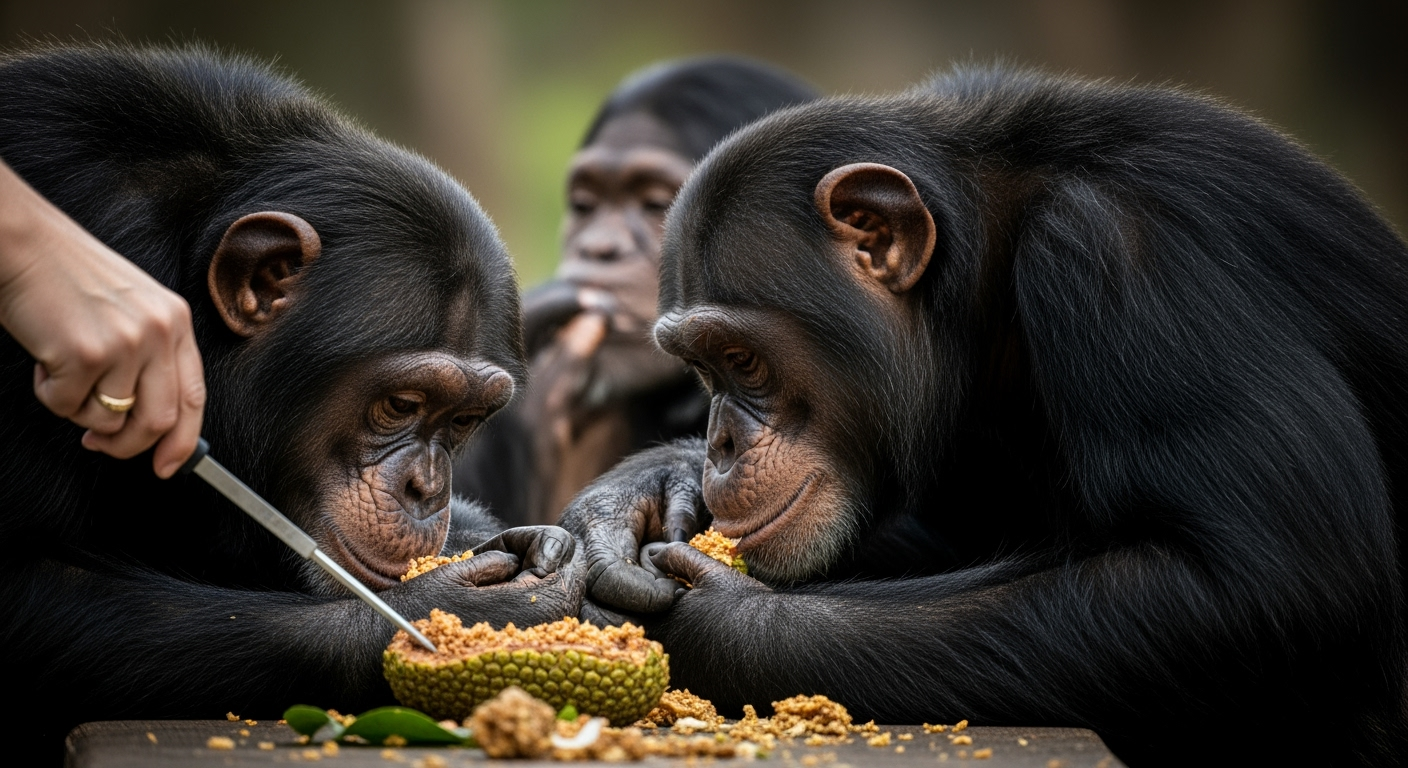Related Articles

The Hidden Danger: Unraveling the Complex Link Between Talc, Asbestos, and Cancer

The Hidden Sleep Divide: Why Women May Need More Rest Than Men





AFRICA – A groundbreaking new study has unveiled that wild chimpanzees routinely consume ethanol through naturally fermented fruits, ingesting daily amounts equivalent to multiple alcoholic drinks for humans. This discovery not only sheds new light on the dietary habits of our closest living relatives but also offers compelling insights into the deep evolutionary origins of alcohol consumption in the primate lineage, including humans.
The research, primarily led by Aleksey Maro, a doctoral student at the University of California, Berkeley, and co-authored by Professor Robert Dudley, published its findings in the journal Science Advances. It provides concrete evidence supporting the long-standing "drunken monkey hypothesis," which posits that humans' attraction to alcohol may be an evolutionary inheritance from our fruit-eating primate ancestors.
The comprehensive study involved meticulous observation and analysis of chimpanzees in two prominent research sites: Uganda's Kibale National Park and Ivory Coast's Taï National Park. Researchers sampled more than 500 fruit samples from at least 21 species known to be part of the chimpanzee diet, measuring their ethanol content. The findings indicated that the ripe pulp of these fruits contained an average alcohol concentration of approximately 0.3 to 0.4 percent by weight.
Given that chimpanzees consume a substantial amount of fruit daily—typically between 5 to 10 percent of their body weight, averaging around 4.5 kilograms (10 pounds)—these seemingly low alcohol concentrations accumulate into a significant daily intake. Calculations revealed that wild chimpanzees ingest approximately 14 grams of pure ethanol each day. To put this into perspective, 14 grams of ethanol is the equivalent of one standard American alcoholic drink. When adjusted for their smaller body mass compared to humans (chimpanzees average about 40 kilograms versus a typical human's 70 kilograms), this daily intake translates to roughly 2 to 2.5 human-equivalent alcoholic drinks.
Despite this consistent intake, researchers observed no visible signs of intoxication among the chimpanzees. This absence of overt drunkenness is attributed to their foraging behavior; the ethanol is consumed slowly over many hours as they graze on various fruits throughout the day, rather than in a single, rapid ingestion. This gradual absorption likely limits any acute intoxicating effects, allowing them to remain agile and functional in their complex arboreal and terrestrial environments.
The study's findings lend considerable support to the "drunken monkey" hypothesis, initially proposed by Professor Robert Dudley. This theory suggests that the allure of alcohol for humans is not a modern cultural phenomenon but rather a deep-seated evolutionary trait. For millions of years, primate ancestors relied on ripe and fermenting fruits as a crucial food source. The fermentation process, driven by yeasts, naturally produces ethanol from the fruit's sugars.
The ability to detect the volatile odors of fermenting fruit would have provided an adaptive advantage for early primates, guiding them to calorie-rich food sources in dense tropical forests where food could be scarce. Ethanol, a relatively light molecule, disperses quickly through the air, acting as an olfactory beacon for these valuable dietary resources. Therefore, an attraction to the scent of fermentation would have directly benefited survival by leading primates to essential sugars and nutrients.
Further backing this evolutionary narrative, separate research on the origins of alcohol consumption indicates that the ability to efficiently metabolize ethanol, primarily through the ADH4 enzyme, originated in the common ancestor of chimpanzees, gorillas, and humans around 10 million years ago. This genetic adaptation coincided with a period when these ancestors likely transitioned to spending more time on the ground, where they would have frequently encountered fallen, fermenting fruits. The ancestral ADH4 enzyme became significantly more efficient—up to 50 times more so—at breaking down ethanol, suggesting a strong selective pressure related to regular alcohol exposure in their diet.
The revelation that chimpanzees are regular, albeit sober, alcohol consumers underscores that exposure to ethanol is far more prevalent in the natural world than previously understood. It suggests that many fruit-eating animals likely encounter and consume some level of ethanol as a routine part of their diet. This challenges the perception of alcohol consumption as solely a human cultural or recreational activity, reframing it as an ancient and widespread biological interaction.
Interestingly, observations have also captured chimpanzees sharing these fermented fruits, a behavior tentatively compared to social drinking among humans. While the precise motivations behind such sharing remain unclear, researchers speculate it could contribute to social bonding, similar to how shared meals and drinks foster camaraderie in human societies.
While the direct behavioral impact of this low-level, chronic alcohol exposure on chimpanzees is difficult to quantify, scientists suggest it could influence various aspects of their lives. For instance, the availability of abundant ripe fruit, and thus ethanol, might affect patterns of territorial patrols, hunting behaviors, and even the reproductive cycles of female chimpanzees. Understanding these subtle interactions could provide a more complete picture of primate ecology and social dynamics.
Ultimately, this study offers a compelling evolutionary bridge, linking the dietary habits of our ancient primate relatives to modern human behaviors. By studying the natural history of alcohol consumption in chimpanzees, scientists gain invaluable insights into why alcohol plays such a pervasive role in human societies, from its initial attraction to its potential for abuse, suggesting that our complex relationship with alcohol is deeply rooted in our shared biological heritage.